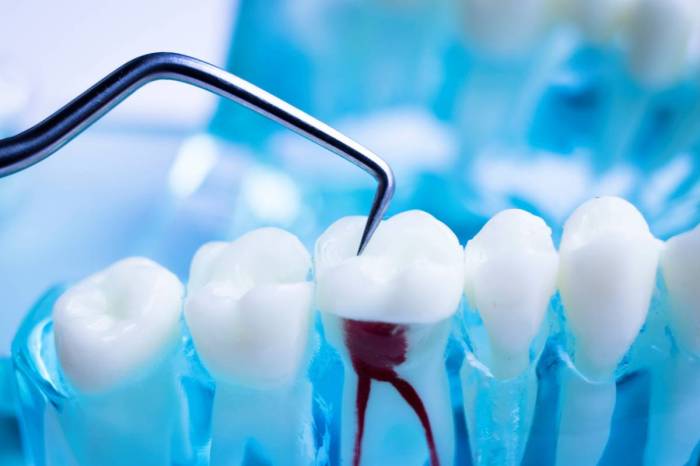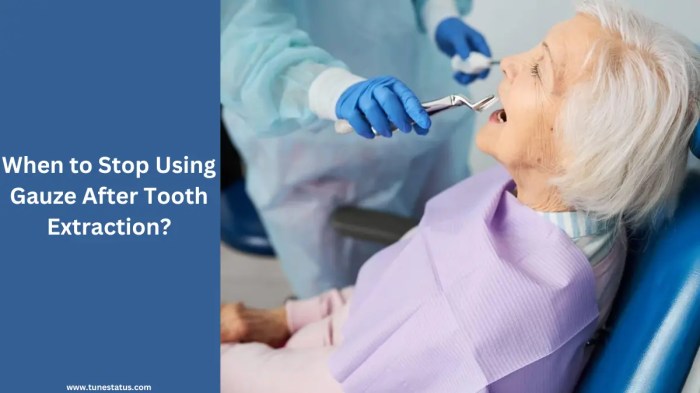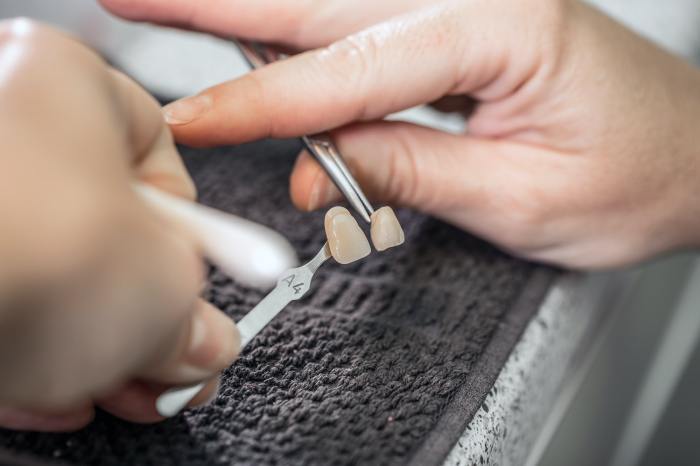How long does root canal take to heal? This comprehensive guide explores the initial healing stages, factors influencing recovery time, post-treatment care, potential complications, and long-term considerations. Understanding the typical timeline and potential variations is crucial for a smooth recovery.
From the initial inflammation to complete healing, this article details the process and factors that can impact the time it takes for your mouth to recover after a root canal. We will also discuss how to manage potential complications and maintain long-term oral health.
Initial Healing Process
The initial healing phase after a root canal procedure is a crucial period where the body’s natural defenses work to restore the affected area. Understanding the stages and symptoms allows patients to manage the process effectively and avoid unnecessary complications. Proper care during this time is essential for a successful outcome.The body’s natural response to a root canal involves a cascade of inflammatory and reparative processes.
Inflammation, while often uncomfortable, is a vital part of the healing process, signaling the body’s attempt to isolate and eliminate any potential infection. The duration and intensity of these responses vary from person to person.
Inflammation
Inflammation is the body’s initial response to the root canal procedure. The area around the tooth experiences increased blood flow and the release of inflammatory mediators. This response aims to isolate the site and prepare for tissue repair. The duration of this inflammatory phase typically lasts one to three days.
Symptoms of Inflammation
Common symptoms during the inflammatory phase include pain, swelling, and tenderness in the area surrounding the treated tooth. These symptoms are a direct result of the body’s immune response and are usually temporary. Mild pain relievers, such as ibuprofen or acetaminophen, can help manage these symptoms.
Tissue Repair
Following the inflammatory response, the body begins the process of tissue repair. Specialized cells, such as fibroblasts, work to rebuild and strengthen the damaged tissues. This stage typically takes three to seven days. The pain and swelling often lessen during this phase, but some discomfort may persist.
Complete Healing
Once the damaged tissues are repaired, the area gradually returns to its normal state. This stage typically begins after seven days, and symptoms like pain and swelling should significantly reduce. With complete healing, patients can resume their normal diet and oral hygiene routines.
Timeline of Initial Healing
| Healing Stage | Duration (approximate) | Symptoms | Actions |
|---|---|---|---|
| Inflammation | 1-3 days | Pain, swelling, tenderness, mild discomfort | Over-the-counter pain relievers (ibuprofen, acetaminophen), soft diet |
| Tissue Repair | 3-7 days | Reduced pain, some discomfort, tenderness | Continue pain relief, soft diet, gentle oral hygiene |
| Complete Healing | 7+ days | Minimal or no discomfort, no swelling, normal function | Normal diet and oral hygiene, regular dental check-ups |
Factors Affecting Healing Time: How Long Does Root Canal Take To Heal
The healing process following a root canal procedure is complex, influenced by various internal and external factors. Understanding these factors allows for proactive management and improved outcomes. Successful healing hinges on a delicate interplay of the patient’s overall health, adherence to post-treatment instructions, and the dentist’s meticulous execution of the procedure.While the initial healing phases are relatively predictable, the duration of complete recovery can vary considerably.
This variance stems from the multitude of interacting factors that impact the body’s ability to repair tissues and combat potential infections. Factors such as pre-existing conditions, adherence to post-operative instructions, and the patient’s individual response to treatment all play crucial roles.
Patient Conditions
Various pre-existing conditions can significantly impact the healing time of a root canal. These conditions can either accelerate or impede the body’s natural healing mechanisms.
- Pre-existing gum disease can lead to an increased healing time. The inflammation and infection associated with gum disease can hinder the body’s ability to effectively repair tissues surrounding the treated tooth. The presence of periodontal pockets and active infections prolong the healing process. Proper management of gum disease prior to the root canal is crucial for optimizing outcomes.
- Diabetes is another condition that may prolong the healing time. Patients with diabetes often have compromised immune systems, which makes them more susceptible to infections and slows down tissue regeneration. Tight glycemic control and consistent communication with the dentist are critical in managing potential complications and ensuring a smoother recovery.
- Medications can have a variable impact on healing time. Some medications, such as blood thinners or immunosuppressants, can interfere with the body’s natural clotting mechanisms and immune response. This can potentially increase the risk of complications and prolong the healing process. Open communication with the dentist about all medications, including over-the-counter drugs and supplements, is essential for managing potential risks.
Potential Complications, How long does root canal take to heal
Post-root canal complications, although rare, can impact healing time. These complications arise from infection, improper technique, or the patient’s overall health.
- Dry socket is a painful condition that occurs when the blood clot that forms in the tooth socket dislodges. This exposes the underlying bone and nerves, leading to significant discomfort. Proper oral hygiene and meticulous adherence to post-treatment instructions can help mitigate the risk of dry socket.
- Periapical abscess can develop if the infection spreads from the tooth to the surrounding tissues. This can cause swelling, pain, and tenderness. Prompt intervention and antibiotic therapy are crucial in treating an abscess.
- Alveolar osteitis is a condition that occurs when the blood clot in the extraction socket is lost or does not form properly. This can lead to significant pain and discomfort.
Preventive Measures
Proactive measures can significantly improve the chances of a smooth and timely healing process after a root canal. These measures are crucial for minimizing complications and ensuring optimal results.
| Preventive Measure | Explanation |
|---|---|
| Proper Oral Hygiene | Maintaining meticulous oral hygiene practices, including brushing and flossing, is essential to prevent further infection and maintain overall oral health. This is crucial in the post-treatment phase. |
| Following Post-Treatment Instructions | Adhering to the dentist’s post-treatment recommendations, such as avoiding strenuous activity, maintaining a soft diet, and attending follow-up appointments, is crucial for a successful recovery. Diligent attention to these instructions minimizes the risk of complications. |
| Patient Condition | Potential Impact on Healing Time | Explanation |
|---|---|---|
| Pre-existing gum disease | Increased healing time | Inflammatory response may hinder healing, potentially requiring additional treatment. |
| Diabetes | Increased healing time | Compromised immune system may prolong healing, necessitating closer monitoring. |
| Medications | Variable impact | Some medications may affect healing by impacting clotting or immune response, potentially requiring adjustments. |
Post-Treatment Care and Success

Following a root canal procedure, diligent post-operative care is paramount for a successful outcome and a swift return to optimal oral health. A commitment to these practices significantly influences the healing process, minimizing complications and maximizing the longevity of the treatment. Adherence to these guidelines ensures that the hard work invested in the procedure yields the desired results.
Importance of Following Post-Operative Instructions
Proper post-operative care is crucial for a speedy and uneventful healing process. Failure to follow these instructions can lead to complications such as infection, prolonged pain, and even the need for additional procedures. The dentist or endodontist will provide specific instructions tailored to individual needs, emphasizing the importance of meticulous adherence. These instructions are developed from years of clinical experience and research, ensuring the best possible outcomes for patients.
Essential Post-Treatment Care
A series of steps are critical to ensure the healing process progresses without interruption. Maintaining oral hygiene, managing pain effectively, and avoiding certain foods and activities are all essential.
- Maintaining meticulous oral hygiene: Regular brushing and flossing are essential to prevent the accumulation of bacteria, which can lead to infection. Using a soft-bristled toothbrush and gentle, circular motions is key. Flossing thoroughly to remove debris between teeth, especially around the treated tooth, is equally important. This will ensure a clean and healthy environment for the healing tissues.
- Effective pain management: Pain medication prescribed by the dentist should be taken as directed. Over-the-counter pain relievers may also be used, but always consult with the dentist or pharmacist regarding dosage and potential interactions. Applying ice packs to the affected area for short periods can help reduce swelling and discomfort.
- Avoiding specific foods and activities: For a certain period after the procedure, it’s crucial to avoid hard, crunchy, or sticky foods. These types of foods can exert pressure on the treated tooth, potentially causing discomfort or re-opening the tooth. Avoid strenuous activities that may put pressure on the jaw or the treated area. This period of precaution ensures that the tooth has ample time to heal and the tissues to settle.
Oral Hygiene Practices
Maintaining a high standard of oral hygiene is crucial to prevent complications after a root canal. This involves more than just brushing and flossing; it requires consistency and attention to detail.
- Regular Brushing: Brushing twice daily for two minutes each time is crucial to remove food particles and plaque. Use gentle, circular motions to avoid irritating the gums.
- Effective Flossing: Flossing at least once a day helps remove plaque and food debris from between teeth, preventing the build-up of bacteria that can lead to inflammation and infection.
- Professional Cleanings: Regular dental checkups and cleanings are essential to maintain optimal oral health and catch any potential issues early on. These appointments allow for thorough assessments by dental professionals, ensuring early intervention and preventing future problems.
Pain Management in the Healing Process
Proper pain management is vital for a smooth recovery. Following the prescribed pain medication regimen, combined with other pain relief methods, will help minimize discomfort and allow for better healing.
- Medication Adherence: Pain medications are prescribed to help manage discomfort. Adhering to the prescribed dosage and schedule is essential for optimal results.
- Alternative Pain Relief: Gentle heat packs or ice packs applied to the affected area can provide relief from pain and swelling.
Potential Issues to Look Out For
While complications are rare, being aware of potential issues allows for early intervention. Prompt action is key in these situations.
- Increased Pain or Swelling: If pain intensifies significantly or swelling increases beyond the initial post-operative period, consult the dentist immediately.
- Persistent Discomfort: Persistent discomfort that doesn’t respond to prescribed pain relief should be reported to the dentist.
- Signs of Infection: Any signs of infection, such as persistent pain, fever, pus discharge, or swelling, require immediate attention from a dental professional.
Potential Complications
Following a root canal procedure, while generally safe and effective, there’s always a possibility of complications. These complications, though infrequent, can range from mild discomfort to more serious issues requiring further intervention. Understanding these potential complications and the signs associated with them is crucial for a smooth recovery and early intervention if needed.Careful monitoring and adherence to post-operative instructions significantly reduce the risk of complications.
A proactive approach, coupled with open communication with your dentist, empowers patients to take an active role in their recovery and maintain oral health.
Signs of Infection
Post-treatment infections, though less common than other complications, are a concern. These infections can range from mild to severe, impacting the overall healing process. Recognizing the signs of infection early allows for prompt treatment, preventing potential long-term complications.
- Persistent pain: Unrelenting pain, particularly if it intensifies or spreads beyond the initial treatment area, might indicate an infection.
- Swelling: Increased swelling around the affected tooth or in the surrounding gum tissue can be a sign of infection. Swelling that doesn’t subside with over-the-counter pain relievers warrants immediate attention.
- Pus discharge: A discharge of pus from the treated area is a strong indicator of infection. Pus is a sign of the body’s immune response to infection and requires immediate medical attention.
- Fever: A fever, especially if accompanied by other symptoms, can signify a systemic infection that might have originated from the treated tooth. A fever that doesn’t respond to standard fever reducers requires medical attention.
- Tenderness to touch: Sensitivity or tenderness in the treated area, particularly when touched, might indicate an infection spreading to surrounding tissues.
Post-Treatment Pain Management
Effective pain management is crucial for a comfortable and successful recovery. Uncontrolled pain can impede the healing process and potentially lead to other complications.
- Persistent throbbing pain: If pain continues beyond the expected timeframe or becomes a persistent throbbing sensation, it’s important to contact your dentist for reevaluation.
- Sensitivity to hot and cold: Sensitivity to hot or cold stimuli, if not managed appropriately, might indicate complications or further treatment needs.
- Numbness or tingling: While temporary numbness is common in some cases, prolonged or persistent numbness or tingling around the treated area requires immediate dental evaluation.
Potential for Damage to Adjacent Teeth
Adjacent teeth can be affected during root canal treatment, especially if proper precautions are not taken. Carefully planned procedures and adherence to best practices can minimize the risk.
- Fracture or cracking: In rare instances, the procedure might inadvertently stress adjacent teeth, potentially leading to a fracture or crack.
- Sensitivity or pain in adjacent teeth: Sensitivity or pain in the teeth neighboring the treated tooth can arise if the procedure impacts the surrounding tissues.
- Inflammation: Inflammation in the tissues around adjacent teeth can sometimes occur due to the procedure’s effects. This often subsides with proper post-treatment care.
Long-Term Considerations
Long-term complications, though less frequent, can occur if the treatment isn’t properly executed or if the tooth structure is significantly compromised.
- Root resorption: In some cases, root resorption, where the tooth’s root tissue is lost, can occur. This can affect the long-term health and stability of the tooth.
- Recurrent infection: While rare, recurrent infection can sometimes develop after a root canal. This requires careful follow-up and further treatment.
Long-Term Considerations
Root canal treatment, while often a successful procedure, necessitates a commitment to long-term oral hygiene and preventative measures. The success of the treatment hinges on diligent post-operative care and a proactive approach to maintaining overall dental health. This phase involves understanding the lasting impact of the procedure and the critical role of ongoing dental check-ups and preventive dentistry.
Long-Term Implications of Root Canal Treatment
Root canal therapy aims to save a tooth, but it does not eliminate the potential for future issues. While the immediate pain and infection are resolved, the treated tooth is often more susceptible to fracture or damage compared to a healthy tooth. This is due to the removal of the natural tooth structure during the procedure. Consequently, the tooth may require additional support or reinforcement over time.
Understanding this potential vulnerability is crucial for patients. Post-treatment, the tooth may not exhibit the same level of resilience as a healthy tooth. The weakened structure might necessitate careful consideration regarding chewing habits and avoiding excessive forces on the affected tooth. Proper maintenance plays a critical role in ensuring the long-term viability of the treated tooth.
Importance of Regular Dental Check-ups
Regular dental check-ups are paramount in the long-term success of root canal treatment. These visits allow dentists to monitor the treated tooth’s condition, detect any early signs of complications, and provide necessary interventions. Proactive detection and management of potential issues can prevent more extensive or costly interventions in the future. A dentist can assess the stability of the tooth, evaluate the integrity of the filling, and ensure proper alignment with surrounding teeth.
Early detection of any signs of recurrent infection or further deterioration in the treated tooth’s condition is crucial for effective management. These check-ups are essential for maintaining the health of the entire oral cavity.
Role of Preventive Dentistry
Preventive dentistry plays a crucial role in maintaining long-term oral health, especially after root canal treatment. A comprehensive preventive approach includes regular brushing and flossing techniques, as well as using fluoride-containing products. A well-balanced diet that limits sugary foods and drinks is also essential. These practices help to reduce the risk of cavities, gum disease, and other oral health issues that can affect the treated tooth or other areas of the mouth.
In cases of root canal therapy, the focus is on maintaining the overall oral health environment to prevent the development of new issues around the treated tooth. These proactive measures significantly contribute to the long-term success of the treatment. By understanding and adhering to preventive dental guidelines, patients can significantly reduce the risk of complications and maintain a healthy smile.
Ending Remarks

In conclusion, healing from a root canal procedure is a multifaceted process, affected by various individual factors. Proper post-operative care, attention to oral hygiene, and adherence to your dentist’s instructions are essential for a speedy and successful recovery. While some discomfort is expected, persistent or worsening symptoms should be promptly addressed. Remember, a healthy mouth is crucial for overall well-being, and regular check-ups are vital for long-term oral health.
Essential Questionnaire
How long does it typically take for the pain to subside after a root canal?
Pain typically subsides within 3-7 days, although individual experiences vary. Over-the-counter pain relievers can help manage discomfort.
What are some common symptoms experienced during the initial healing phase?
Common symptoms include pain, swelling, and tenderness. These are usually temporary and manageable.
Can certain medical conditions affect the healing time for a root canal?
Yes, pre-existing conditions like gum disease or diabetes may lead to longer healing times due to compromised immune response.
What are some preventative measures to consider for a faster recovery?
Maintaining good oral hygiene and strictly following your dentist’s post-treatment instructions are vital for a quicker and more successful healing process.
 Nimila
Nimila



